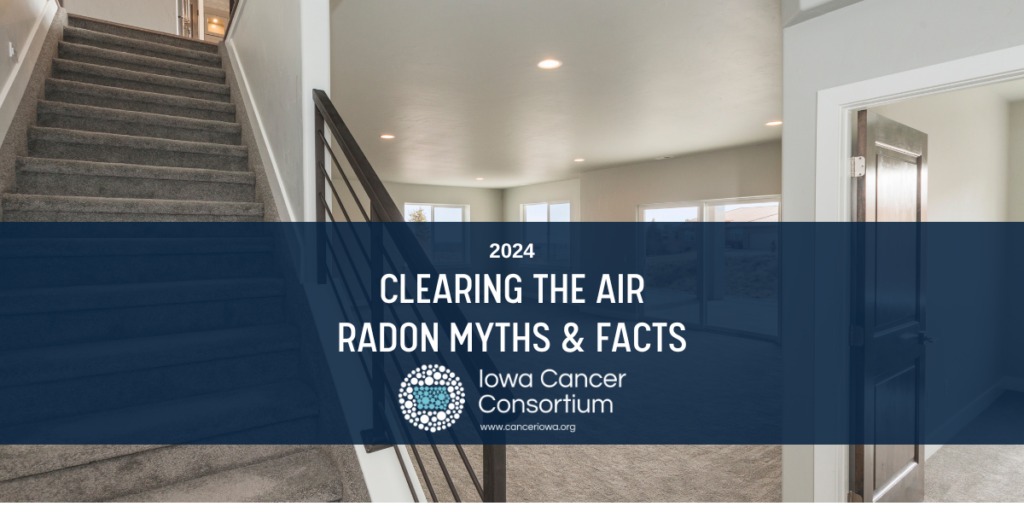Clearing the Air: Radon Myths & Facts

Coralville, IA – In a tradition spanning 35 years, Governor Kim Reynolds proclaimed January as Radon Action Month in Iowa on January 8, 2024. Radon is a naturally occurring radioactive gas from the ground that can seep into homes and buildings, and is the second-leading cause of lung cancer after tobacco.
Governor Kim Reynolds is joined by public health and radon awareness advocates at the January 2020 Radon Action Month proclamation signing.
In their 2023 State of Lung Cancer Report, the American Lung Association announced that over half (57.9%) of radon test results in Iowa were at or above the U.S. Environmental Protection Agency’s action level of 4 pCi/L. The report ranks Iowa in 49th place compared to other states, meaning Iowa is almost the worst state when it comes to the percentage of unsafe radon test results, tied with North Dakota and surpassed only by South Dakota.
In an effort to raise awareness and “clear the air” about radon, the Iowa Cancer Consortium has compiled some myths and facts about the radioactive gas.
Myth: Fixing radon (a process called “radon mitigation”) is too expensive.
Fact: Radon mitigation, done by a licensed radon mitigation specialist, is similar in cost to replacing a major appliance, and is less expensive than the cost of treating lung cancer. Payment options can include a no-interest loan from your bank or credit union, a payment plan with the mitigation company, or reimbursement from your flexible spending account (FSA), health savings account (HSA) or a health reimbursement arrangement (HRA). You can find licensed radon mitigation specialists on the Iowa Department of Health and Human Services website.
Myth: Newer homes or homes with a radon mitigation system don’t need to be tested for radon.
Fact: Any home can have a radon problem, regardless of when it was built. All homes – including those with a radon mitigation system – should be tested every two years.
Myth: Residences without a basement don’t need to be tested for radon.
Fact: Radon can enter a residence or building wherever there is a crack or gap and can get trapped indoors depending on the building’s unique air flow. All residences should be tested for radon every two years, even if there is no basement.
Myth: Radon occurs naturally, there’s no way to prevent exposure.
Fact: Radon occurs naturally when uranium, radium, and thorium break down in soil, rocks, and groundwater. Outdoors, levels of radon in the air are diluted and not harmful. Indoors, however, radon gas can get trapped, which results in higher concentrations of the radioactive gas. Long-term exposure to elevated levels of radon can cause lung cancer, which is why radon testing and radon mitigation (when indicated) is so important.
The Iowa Cancer Consortium urges Iowans to take action this Radon Action Month and test their residences for radon. Low-cost test kits can be purchased at hardware stores or from the American Lung Association at www.canceriowa.news/radonkit or by calling 1-800-383-5992. Learn more about radon in Iowa at www.canceriowa.org/radon.
—
The Iowa Cancer Consortium is Iowa’s statewide comprehensive cancer coalition. As a leader in cancer control, the Iowa Cancer Consortium offers the state’s key cancer partners and advocates access to resources, expertise, and non-competitive collaboration across traditional boundaries for a bigger impact in cancer prevention, early detection, treatment, quality of life, and health equity. Learn more at www.canceriowa.org.

